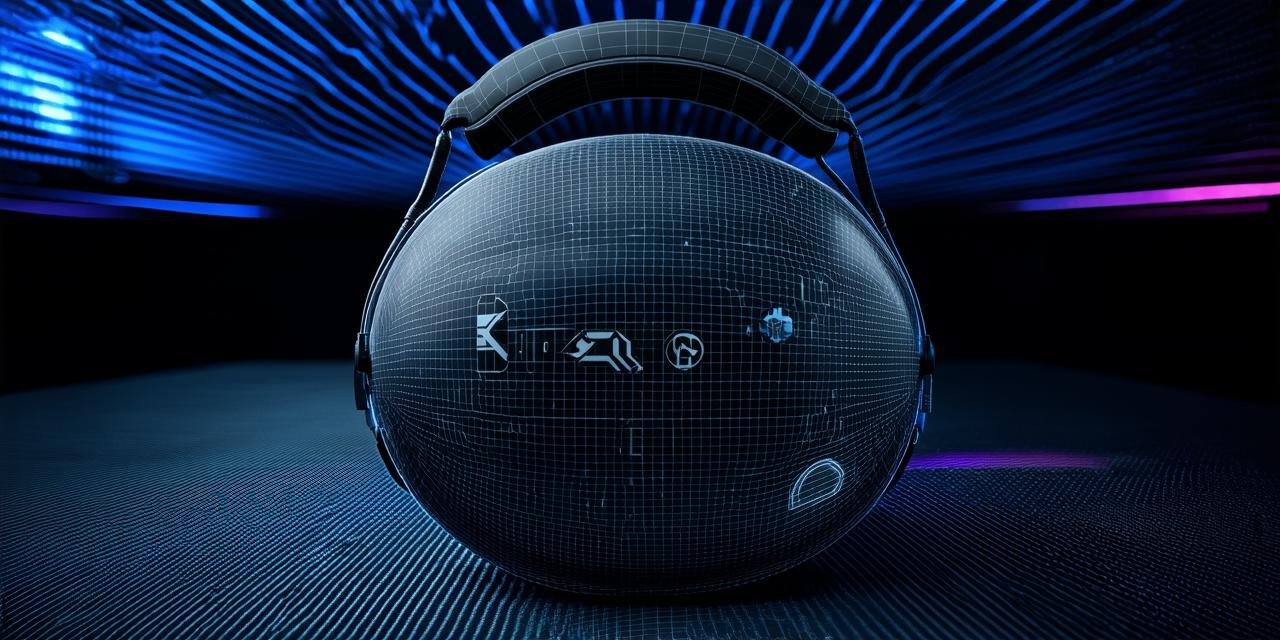Understanding Unreal Engine
Unreal Engine is a powerful 3D creation tool used in game development and virtual reality applications. It provides developers with an extensive set of features such as real-time rendering, physics simulation, animation tools, and more. With its intuitive interface, it’s easy to create immersive experiences that are both visually stunning and technologically advanced.
Key Features for VR Development
To optimize Unreal Engine for VR development, you need to understand the key features that make it stand out from other engines. Here are some of the most important features:
- High-performance rendering: Unreal Engine’s advanced graphics engine delivers stunning visuals with minimal latency. It supports multiple graphics APIs such as DirectX 12 and Vulkan, making it compatible with a wide range of hardware configurations.
- Physics simulation: Unreal Engine provides a powerful physics engine that simulates real-world physics in real-time. This feature is crucial for creating realistic VR experiences, especially when dealing with complex environments such as flying or underwater exploration.
- Animation tools: Unreal Engine offers an extensive set of animation tools that allow developers to create dynamic and lifelike character movements. It also supports motion capture technology, making it easy to bring real-world actors into your VR projects.
- Multiplayer support: Unreal Engine has built-in support for multiplayer development, allowing you to create shared experiences that can be enjoyed by multiple users. This feature is essential for creating social VR applications such as virtual concerts or online gaming communities.
- Cross-platform compatibility: Unreal Engine supports a wide range of platforms, including PC, consoles, and mobile devices. With its cross-platform capabilities, you can develop once and deploy your VR projects on multiple devices, reaching a wider audience.
Optimizing Your Projects for Performance
To optimize Unreal Engine for VR development, you need to focus on performance. Here are some tips to help you achieve the best results:
- Optimize your graphics settings: To improve performance, you can adjust your graphics settings such as resolution, frame rate, and anti-aliasing. You can also reduce the number of draw calls by using techniques like LOD (Level of Detail) and culling.
- Reduce motion sickness: Motion sickness is a common issue in VR development. To reduce the risk of motion sickness, you can use techniques like frame interpolation and v-sync. You can also adjust your camera settings to minimize sudden movements.
- Optimize your physics simulation: Physics simulation can be a resource-intensive process, especially when dealing with complex environments. To optimize your physics simulation, you can reduce the number of physics objects in the scene or use simplified physics models.
- Minimize latency: Latency is another critical factor that affects VR performance. To minimize latency, you can reduce the amount of data transferred between the client and server or use techniques like predictive networking.
- Optimize your code: Finally, optimizing your code is crucial for achieving high performance in VR development. You can use profiling tools to identify performance bottlenecks and optimize your code accordingly.
Real-World Examples of Unreal Engine in Action
There are many real-world examples of Unreal Engine being used for VR development. Here are a few:
- Oculus Home: Oculus Home is a social VR platform that allows users to explore virtual worlds and play games with friends. Unreal Engine is used extensively in the development of Oculus Home, providing a seamless and immersive experience for users.
- Ready Player One: Ready Player One is a science fiction novel by Ernest Cline that was later turned into a film. The book describes a dystopian future where people spend most of their time in a virtual reality called the OASIS. Unreal Engine was used to create the virtual world depicted in the book and the film.
- VR Training Simulators: Unreal Engine is also used to create training simulators for a variety of industries, including aviation, military, and healthcare. These simulations provide a safe and controlled environment for trainees to practice their skills and improve their performance.
Conclusion
Optimizing Unreal Engine for VR development requires an understanding of its key features and an emphasis on performance. By focusing on graphics settings, motion sickness reduction, physics simulation optimization, latency minimization, and code optimization, you can create immersive and engaging VR experiences that run smoothly on a wide range of devices. Unreal Engine’s versatility and cross-platform compatibility make it a popular choice for VR development, and its extensive set of features and tools make it easy to create dynamic and lifelike experiences. Whether you’re developing social applications, training simulators, or immersive games, Unreal Engine is a powerful tool that can help you achieve your goals.
